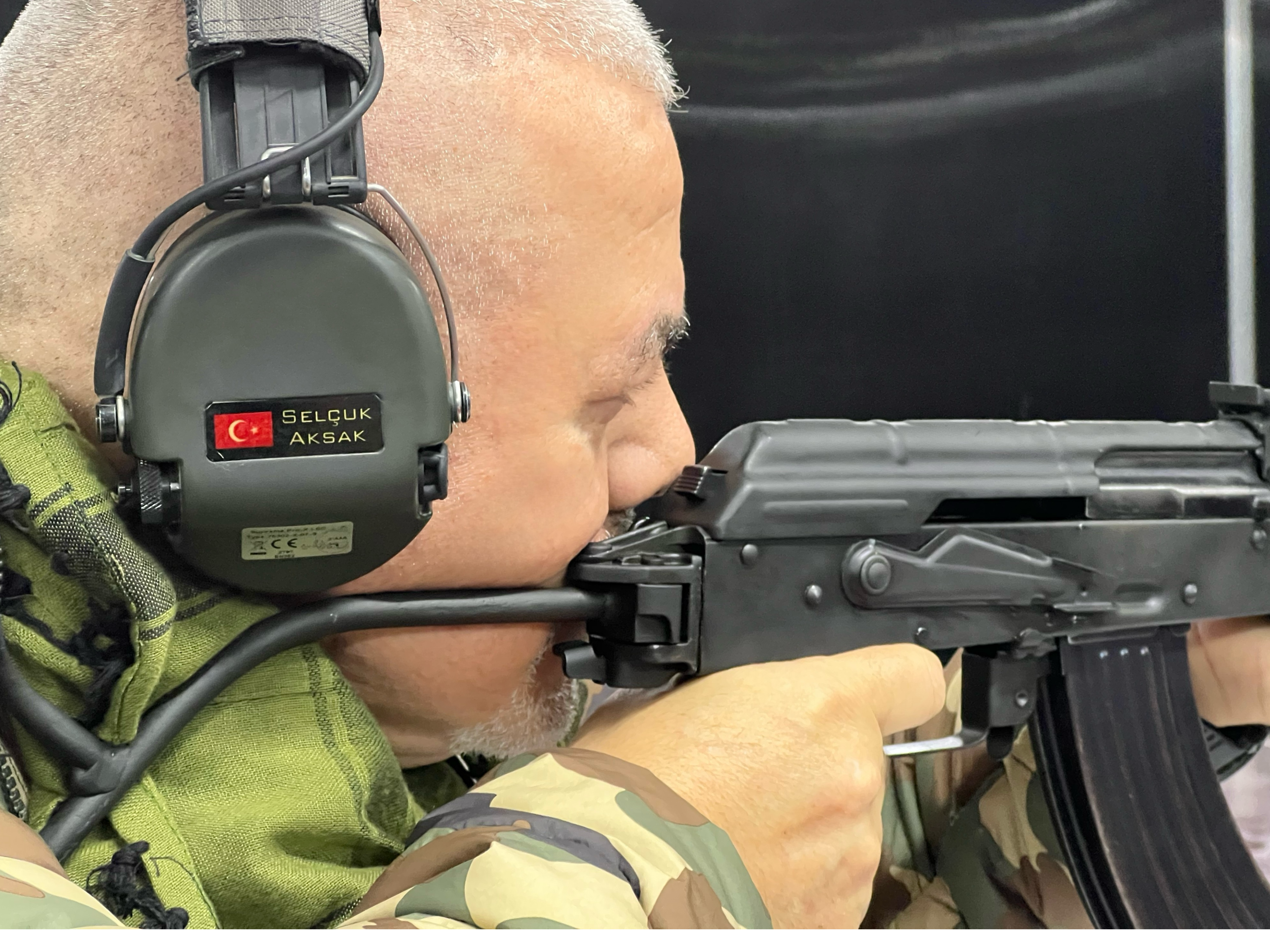The Anatomy of Limp Wristing: The Phenomenon and Its Impact on Malfunctions in Semi-Automatic Pistols!
- Selcuk Aksak
- Apr 19
- 4 min read

Introduction
The reliability of semi-automatic pistols is not solely determined by engineering design and ammunition quality. The shooter’s grip, wrist stability, and overall body posture are equally critical factors influencing firearm performance.
In this context, the phenomenon known in shooting literature as "limp wristing" is frequently observed among novice shooters, yet may also occasionally occur in experienced ones. It represents a mechanical disruption that affects the proper cycling of the firearm.
This article aims to define limp wristing, analyze its impact on mechanical function, differentiate it from similar technical issues, and present methods for its diagnosis and prevention through structured training.
1- Mechanical Cycling of Semi-Automatic Pistols Semi-automatic pistols function by utilizing the gas pressure generated after firing to drive the slide backward, eject the spent casing, and chamber a new round from the magazine.
To ensure reliable operation, three primary conditions must be met:
Adequate recoil energy,
A properly functioning recoil spring system,
A stable frame position during the firing cycle.
If the firearm's frame moves excessively upward during recoil, the slide cannot encounter the required resistance to complete its travel, which disrupts ejection and feeding operations.
2- What is Limp Wristing? Limp wristing occurs when the shooter fails to maintain sufficient wrist rigidity or grip strength. As a result, part of the recoil energy is absorbed by the shooter’s hand and forearm, impeding the rearward motion of the slide.
This leads to:
Incomplete slide travel,
Failed ejection of the spent casing,
Improper chambering of the next round.
This issue is exclusive to semi-automatic pistols due to their reliance on slide-driven cycling. Revolvers, which operate via manual rotation, are not affected.
Malfunctions Caused by Limp Wristing Failure to Eject (Stovepipe)

If the slide does not travel fully rearward, the spent casing may not be completely ejected. In such cases, the casing can become lodged vertically between the breech face and the barrel hood as the slide returns forward a malfunction visually reminiscent of a stovepipe. The term "stovepipe" was coined in the 1920s due to its resemblance to the vertical exhaust pipes on wood-burning stoves.
Limp wristing is one of the most common causes of stovepipe malfunctions, as weak wrist stability hinders the slide's velocity.
How to Fix It: The recommended remedy is the widely adopted "Tap – Rack – Assess" method:

Tap: Firmly strike the base of the magazine to ensure proper seating.
Rack: Pull the slide fully rearward and release to clear the casing and chamber a new round.
Assess: Realign the muzzle with a safe direction and reassess the target environment.
Failure to Feed

If the slide’s rearward motion is insufficient, it may not pick up the next round from the magazine or fail to fully insert it into the chamber. This is a classic result of limp wristing.
Failure to Return to Battery

Even if a new round is chambered, the slide may not completely close. In such cases, pulling the trigger will not result in ignition creating a tactical disadvantage.
Technical Issues Commonly Misdiagnosed as Limp Wristing Some malfunctions present symptoms similar to limp wristing but arise from different mechanical or ergonomic factors.
Recoil Spring Fatigue

Certain sport-configured pistols utilize lighter recoil springs. Over time, these springs may lose their tension, causing incomplete slide cycling.
While this may resemble limp wristing, the actual problem lies in mechanical wear.
Excessive Thumb Pressure on the Slide

However, excessive pressure against the slide particularly with pistols that use soft recoil springs can impede the slide’s forward motion and result in malfunctions.
Though visually similar to limp wristing, the cause is improper thumb placement, not wrist instability.
Prevention and Training Strategies Limp wristing can largely be prevented with correct technique and regular training:

Proper Grip: The firearm should be gripped high on the backstrap, with both hands providing balanced pressure. The shooting hand must avoid contact with the slide’s moving components.
Wrist Stability: The wrists must remain locked during firing, particularly in rapid strings. Elbows should remain slightly bent neither fully extended nor overly relaxed.
Training Methods:
Dry-fire drills improve grip consistency and wrist positioning.
Slow-motion video analysis allows for postural and technique review.
Tap – Rack – Assess must be practiced to address stovepipe malfunctions quickly.
Instructor-led sessions help reinforce muscle memory and correct technique.
Maintenance and Cleaning: Not all stovepipe malfunctions are caused by shooter error. Poor maintenance or low-quality ammunition—particularly handloads—may also cause failures. Ensuring the firearm is clean and properly lubricated supports consistent cycling.
“Dirty tools won’t properly clean your firearms.” – NRA Publications Network
Conclusion Limp wristing is a commonly misidentified malfunction source in semi-automatic pistols. When addressed with proper technique, structured repetition, and equipment maintenance, it can be effectively mitigated.
Instructors and shooters who understand this phenomenon will significantly improve their training outcomes and field performance. Not every malfunction stems from the weapon itself—sometimes, the solution lies in the hands of the shooter.
Author
Dr. Selçuk Aksak
Shooting Sport Instructor & Coach
IDPA CSO, Gunsmith
Burkut Academy
References
Wilmore, J. H., & Costill, D. L. (2004). Physiology of Sport and Exercise. Human Kinetics.
Spirduso, W. W. (2005). Physical Dimensions of Aging. Human Kinetics.
Smith, T. O. et al. (2011). The impact of wrist osteoarthritis on functional performance. Clinical Rheumatology.
Cooper, L. et al. (2012). Wrist Stabilization during Repetitive Upper Limb Tasks. JAB.
NRA Publications Network (2024). Clearing Handgun Malfunctions.







Comments